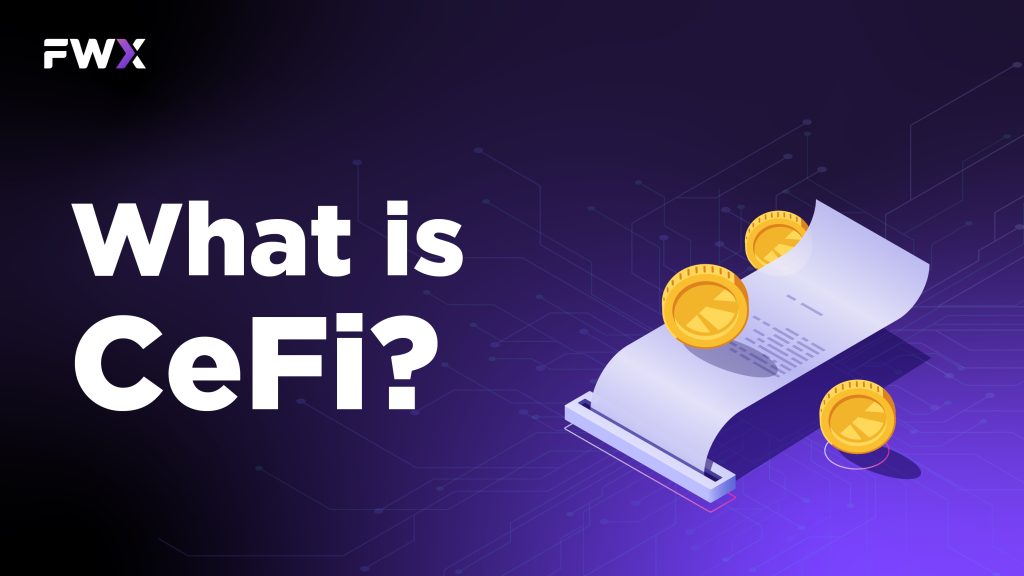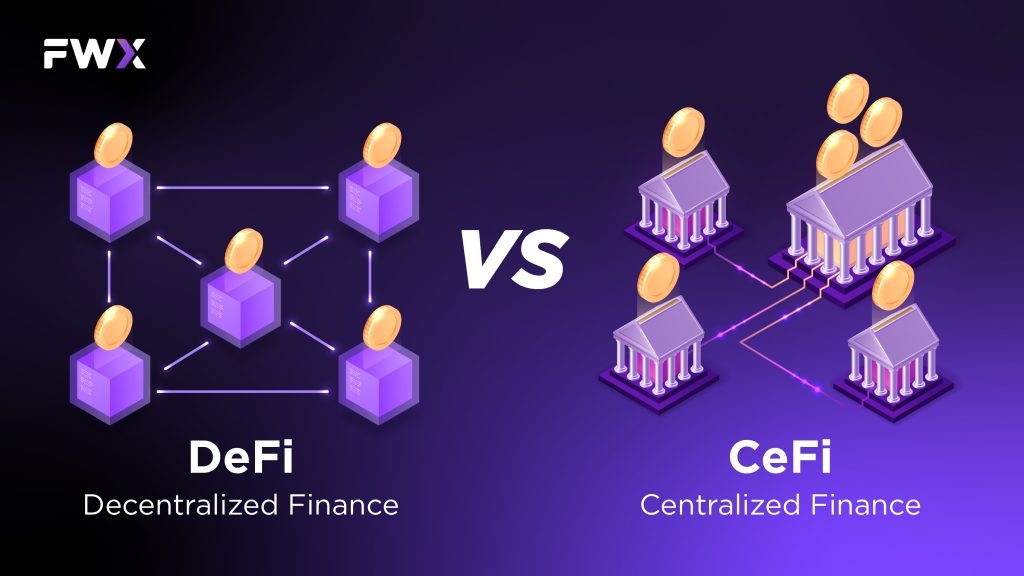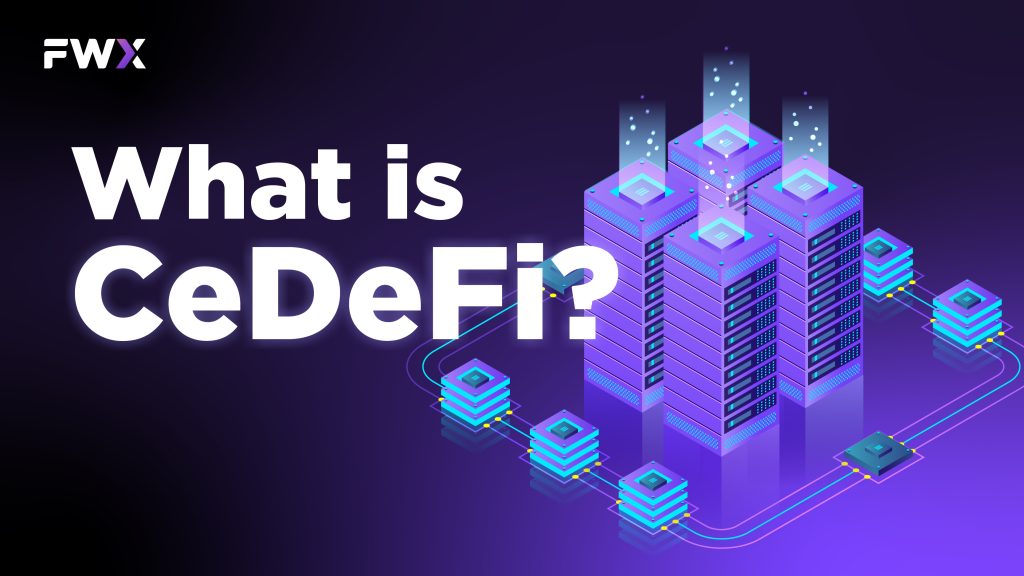Knowing Centralized Finance (CeFi) is important because it is the dominant form of finance, providing a convenient and stable platform for managing and controlling financial transactions.it is also a valuable resource for beginners to understand the basics of finance and investments, with a wide range of financial products and services. Understanding CeFi will help you make informed decisions about your personal and business finances, investment strategies, and online payments. Knowing CeFi is also essential to understand the competition with decentralized finance (DeFi) and the future of the financial system.
What is CeFi and how does it work?

CeFi (Centralized Finance) refers to a financial system that operates on a centralized platform. It is a traditional financial system that operates under the control of centralized institutions, such as banks, government agencies, and financial corporations. The centralization of CeFi allows for the efficient transfer of funds and the storage of financial assets but also leaves it vulnerable to data breaches, corruption, and other security risks.
financial institutions act as intermediaries, facilitating transactions between buyers and sellers, and maintaining control over the assets stored in their system. This means that these institutions are responsible for the security of assets and transactions and for setting the rules for financial transactions. The centralization of the system allows for quick and efficient processing of financial transactions, but it also raises concerns about privacy and control.
One of the main ways CeFi works is through the use of fiat currencies. Fiat currencies are government-issued currencies that have no intrinsic value and are backed by the full faith and credit of the issuing government. This means that fiat currencies can be traded and used as a means of payment, and are accepted by most merchants and financial institutions around the world.
Financial institutions store fiat currencies in digital accounts and allow users to deposit, withdraw, and transfer funds through their platforms. This allows for fast and efficient processing of transactions and provides users with a convenient way to store and manage their financial assets.
CeFi also provides users with a range of financial products and services, including savings accounts, loans, mortgages, and investment opportunities. These products and services are designed to help users grow their wealth and manage their finances more effectively.
Features of CeFi
it offers a range of features that make it a popular choice for many users. Some of the main features:
- Convenient and Efficient Transactions: this provides users with a fast and convenient way to transfer funds, make payments, and store financial assets. This is made possible through the use of digital accounts, which allow users to deposit, withdraw, and transfer funds quickly and efficiently.
- Range of Financial Products and Services: provides users with a wide range of financial products and services, including savings accounts, loans, mortgages, and investment opportunities. These products and services are designed to help users grow their wealth and manage their finances more effectively.
- Stable and Secure: operates through the use of fiat currencies, which are backed by the full faith and credit of the issuing government. This means that fiat currencies are generally more stable and secure than cryptocurrencies, and are accepted by most merchants and financial institutions around the world.
- Regulated: CeFi operates within a regulated environment, which provides users with a high degree of protection and security. This means that financial institutions must adhere to strict rules and regulations, and are subject to government oversight, which helps to reduce the risk of fraud and other financial crimes.
What is CeFi vs DeFi?

CeFi (Centralized Finance) and DeFi (Decentralized Finance) are two distinct financial systems that operate on opposite ends of the spectrum when it comes to centralization and control.
CeFi refers to a traditional financial system that operates on a centralized platform and is controlled by centralized institutions, such as banks, government agencies, and financial corporations. In CeFi, financial institutions act as intermediaries, facilitating transactions between buyers and sellers, and maintaining control over the assets stored in their system. CeFi operates through the use of fiat currencies, provides users with a range of financial products and services, and allows for quick and efficient processing of financial transactions.
DeFi, on the other hand, is a decentralized financial system that operates on a blockchain network, such as Ethereum, and is powered by smart contracts. In DeFi, there is no central authority or intermediaries controlling transactions or assets, and instead, users interact with each other directly through decentralized protocols and decentralized exchanges. DeFi operates through the use of cryptocurrencies, such as Bitcoin, and provides users with a range of financial products and services, such as lending, borrowing, and trading, without the need for traditional financial intermediaries.
The main difference between CeFi and DeFi is that CeFi is a centralized system that is controlled by centralized institutions, while DeFi is a decentralized system that is powered by smart contracts and operates on a blockchain network. CeFi operates through the use of fiat currencies, while DeFi operates through the use of cryptocurrencies. CeFi provides users with a range of financial products and services, but also raises concerns about privacy and control, while DeFi provides users with a high degree of privacy and control, but also raises concerns about security and regulatory compliance.
CeFi vs. DeFi: What’s the Difference?
CeFi (Centralized Finance) and DeFi (Decentralized Finance) are two different approaches to the financial system, and they have several key differences.
- Centralization vs Decentralization: CeFi operates on a centralized platform and is controlled by centralized institutions, such as banks, credit unions, and other financial intermediaries. DeFi, on the other hand, operates on a decentralized platform, without intermediaries or central authority. Instead, DeFi uses blockchain technology to provide a secure and transparent platform for financial transactions.
- Accessibility: CeFi is typically accessible to a limited number of users, such as those with bank accounts and credit scores. DeFi, on the other hand, is accessible to anyone with an internet connection and a digital wallet, making it more inclusive and accessible to a wider range of users.
- Trust: CeFi relies on the trust of centralized institutions and intermediaries to secure and manage financial transactions. DeFi, on the other hand, uses blockchain technology to secure and manage financial transactions, making them more secure and transparent.
- Cost: CeFi often involves higher fees and charges, such as transaction fees, service fees, and other charges, due to the costs of intermediaries and central authorities. DeFi, on the other hand, is typically more cost-effective, with lower fees and charges, due to its decentralized nature.
- Flexibility: CeFi is typically less flexible and less adaptable to changing market conditions and user needs, due to its centralized nature. DeFi, on the other hand, is more flexible and adaptable, due to its decentralized and open-source nature, and can quickly respond to changing market conditions and user needs.
What is CeDeFi?

CeDeFi (Centralized-Decentralized Finance) is a hybrid model that combines the benefits of both CeFi (Centralized Finance) and DeFi (Decentralized Finance). CeDeFi is designed to provide users with the best of both worlds, offering the convenience, security, and stability of CeFi and the innovation, accessibility, and decentralization of DeFi.
- Hybrid Model: CeDeFi is a hybrid model that combines centralized and decentralized approaches to the financial system, providing users with a flexible and adaptable platform for financial transactions. CeDeFi uses blockchain technology to secure and manage financial transactions, while also leveraging the convenience and stability of centralized intermediaries and institutions.
- Accessibility: CeDeFi is designed to provide users with greater accessibility to financial services, by leveraging the decentralization and accessibility of DeFi and the stability and convenience. CeDeFi provides users with a wider range of financial products and services, with a lower cost of access, making it more inclusive and accessible to a wider range of users.
- Security: CeDeFi uses blockchain technology to secure financial transactions, and also leverages the stability and security of centralized intermediaries and institutions. CeDeFi provides users with a more secure and transparent platform for financial transactions, by combining the benefits of both CeFi and DeFi.
- Cost: CeDeFi is designed to be more cost-effective than CeFi, by leveraging the cost-effectiveness of DeFi, while also providing users with the stability and convenience of CeFi. CeDeFi provides users with a lower cost of access to financial services, with lower fees and charges, making it a more cost-effective choice for many users.
- Flexibility: CeDeFi is designed to be more flexible and adaptable than CeFi, by leveraging the decentralization and open-source nature of DeFi, while also providing users with the stability and convenience of CeFi. CeDeFi provides users with a more flexible and adaptable platform for financial transactions, by combining the benefits of both CeFi and DeFi.
Conclusion

In conclusion, CeFi (Centralized Finance) is a traditional approach to the financial system that operates on a centralized platform, controlled by centralized institutions, such as banks, credit unions, and other financial intermediaries. CeFi provides users with a convenient and efficient platform for personal and business finance, investment and trading, remittances, and online payments.
CeFi offers several advantages, including stability, security, convenience, and a wide range of financial products and services. CeFi also provides users with a trusted platform for financial transactions, managed by centralized intermediaries and institutions.
However, CeFi also has some limitations, including a limited range of accessibility, higher costs, and less flexibility. CeFi is typically less inclusive and less accessible to a wider range of users, and may also have higher fees and charges, due to the costs of intermediaries and central authorities.
In summary, CeFi is a traditional and convenient choice for many users, providing users with a stable and secure platform for financial transactions, with a wide range of financial products and services. However, CeFi may not be the most innovative or disruptive choice for many users, and may also be less inclusive and less accessible to a wider range of users.


